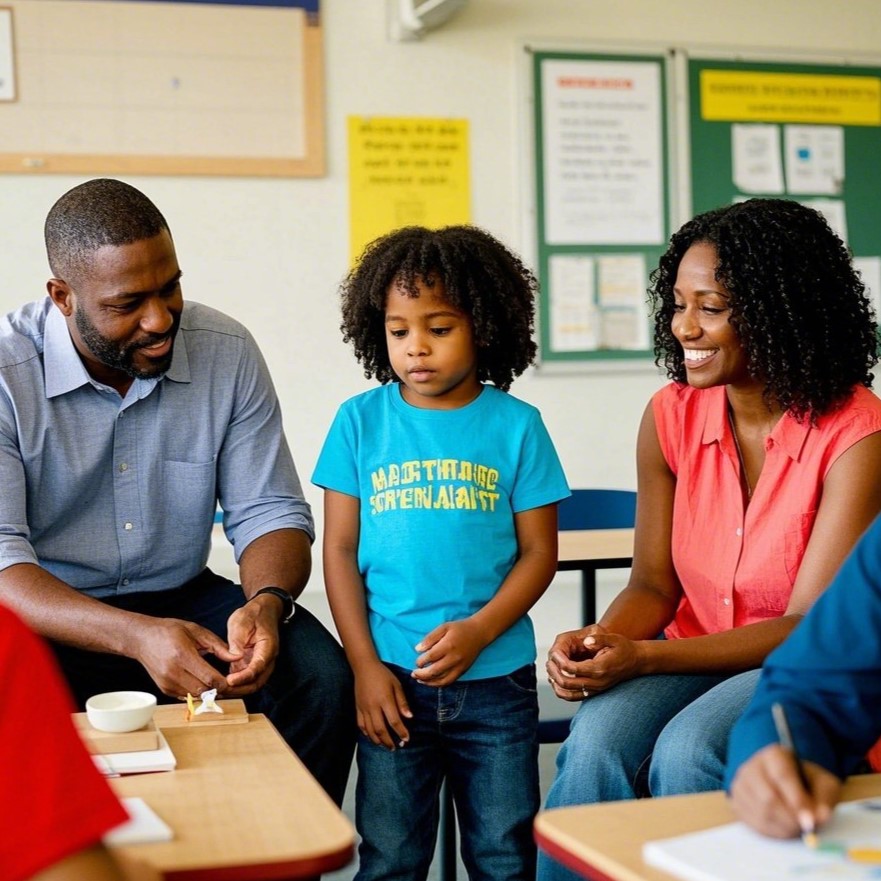As parents and educators, one of the most powerful gifts we can give children is the belief that they can grow, improve, and achieve success through effort and persistence. This is the core idea behind the growth mindset—a concept popularized by psychologist Carol Dweck—that intelligence and abilities aren’t fixed traits, but qualities that can develop over time. In contrast to the fixed mindset, which believes abilities are static, a growth mindset encourages children to embrace challenges, learn from mistakes, and continue developing their potential. But how can parents and educators help children develop a growth mindset? In this article, we’ll explore the importance of a growth mindset for kids, strategies to foster it, and practical activities to promote this mindset.
What is a Growth Mindset?
A growth mindset is the belief that skills and intelligence can be developed through effort, learning, and perseverance. Children with a growth mindset understand that failure is part of the learning process, and they see challenges as opportunities to improve. This contrasts with a fixed mindset, where children believe their abilities are innate and unchangeable. In a fixed mindset, failure is seen as a reflection of one’s limited abilities, leading to frustration, avoidance, or giving up.
For example, a child with a growth mindset might say, “I didn’t do well on this test, but I can study harder and do better next time.” A child with a fixed mindset might say, “I’m just not good at math, so I’ll never get better.” The difference is profound, as it influences how children approach learning, handle setbacks, and build their confidence.
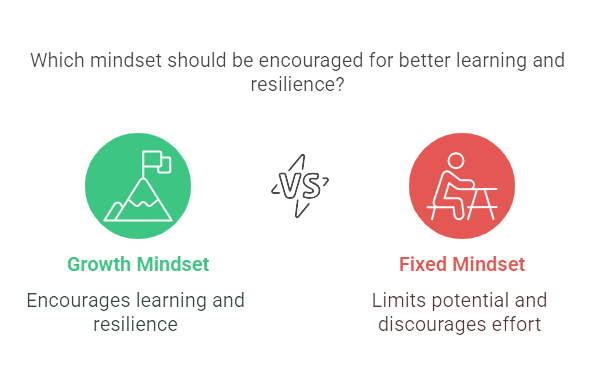
The Importance of a Growth Mindset for Kids
Encouraging a Love of Learning
A growth mindset fosters a love of learning because children with this mindset focus on effort and improvement rather than innate ability. They understand that learning is a journey and that skills can be honed over time. This shift in focus makes learning more enjoyable and rewarding, as it is not about achieving perfection but about making progress. When children embrace challenges instead of avoiding them, they build a sense of curiosity and excitement about acquiring new skills and knowledge.
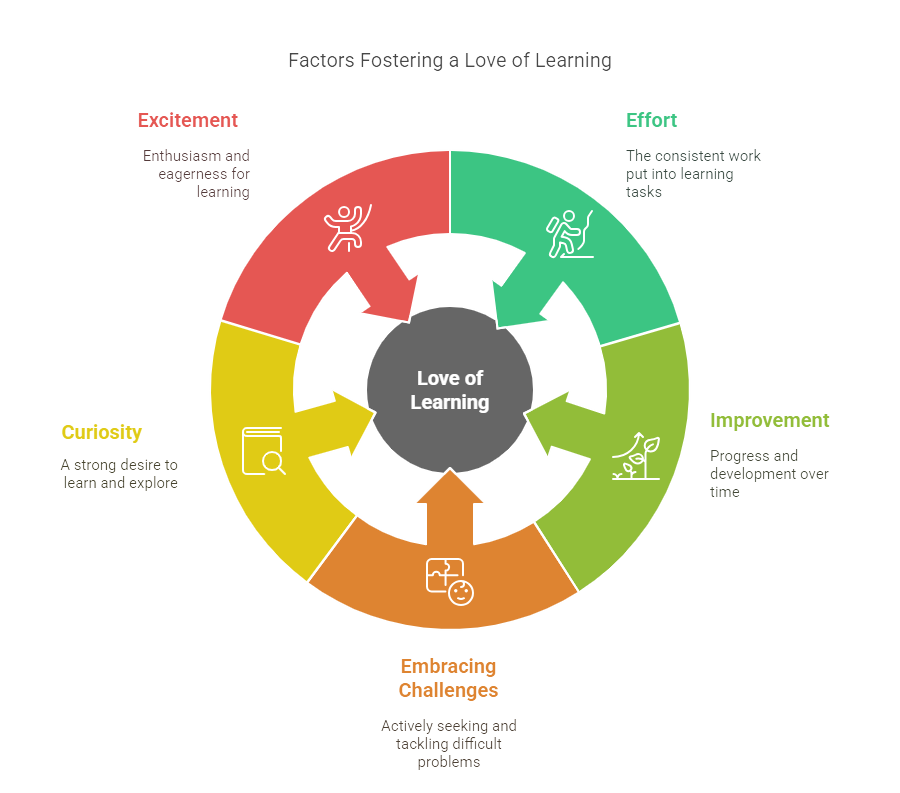
Fostering Resilience
Children with a growth mindset develop greater resilience. When faced with difficulties, they are more likely to persist rather than give up. This resilience comes from viewing setbacks as temporary obstacles to be overcome, not as reflections of their abilities. For instance, a child who struggles with reading might see it as a challenge to tackle rather than a reason to stop trying. Resilience is a key ingredient in long-term success, as it encourages children to keep trying despite challenges and to learn from their mistakes.
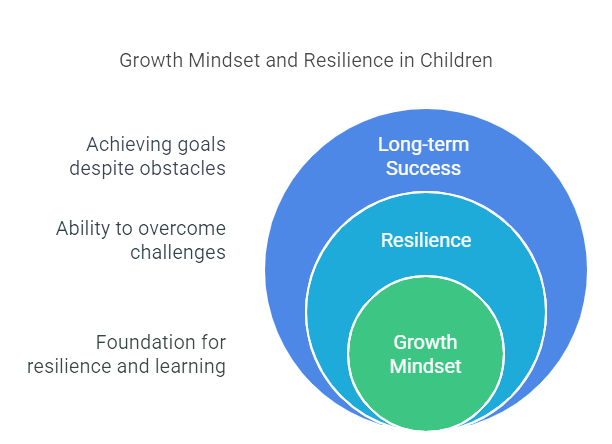
Building Self-Esteem and Confidence
By emphasizing effort over outcome, a growth mindset can help build a child’s self-esteem. Children who understand that their abilities can improve with practice develop a more positive self-concept. They feel empowered to take risks, try new things, and approach challenges with confidence. When they see improvement through consistent effort, their belief in their abilities grows. This process also teaches them the value of hard work and perseverance, which can translate into higher motivation and greater self-worth.
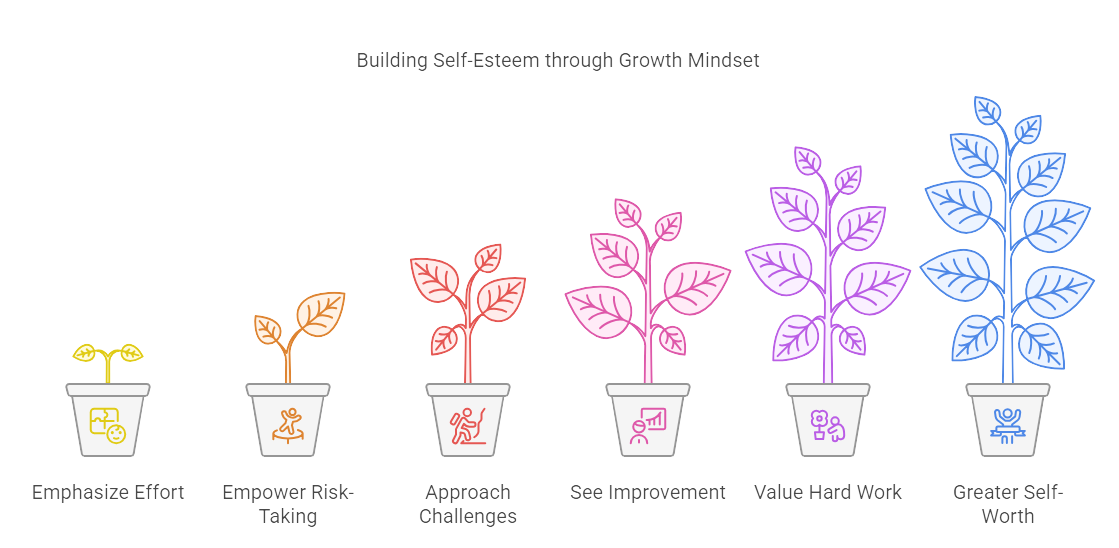
Improving Academic and Social Skills
A growth mindset is not just beneficial for academic learning but also for social skills. Children who adopt a growth mindset in their academic work often transfer this perspective to their relationships with peers. They are more likely to collaborate, accept feedback, and view social challenges as opportunities to improve communication and empathy. Additionally, a growth mindset encourages emotional regulation and problem-solving—skills that are essential for social interactions and long-term success.

How to Cultivate a Growth Mindset in Kids
Fostering a growth mindset in children involves creating an environment that encourages effort, resilience, and learning from failure. Here are some strategies to help children develop a growth mindset:
Praise Effort, Not Just Results
The way we praise children plays a significant role in shaping their mindset. Instead of praising a child for being “smart” or “talented,” focus on praising the effort, strategies, and persistence they demonstrate. For example, instead of saying, “You’re so good at math,” say, “You worked really hard on this math problem, and it paid off!” This reinforces the idea that effort leads to improvement and success.
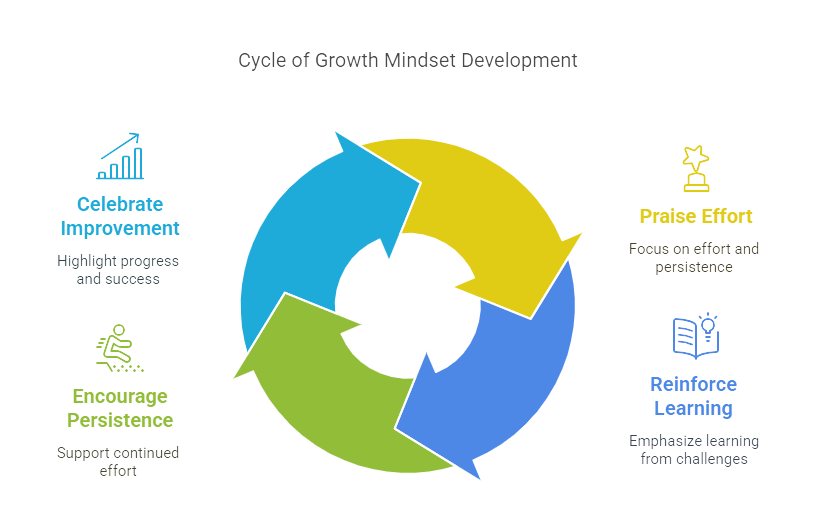
Encourage Problem-Solving and Persistence
One of the best ways to nurture a growth mindset is by encouraging children to embrace problem-solving. When they face challenges, instead of immediately offering solutions, ask guiding questions like, “What do you think you can do next?” or “How can we approach this differently?” This helps children see challenges as opportunities to develop new strategies and approaches. It’s important to emphasize that struggles are part of the process and that persistence leads to progress.

Model a Growth Mindset
Children learn by example, so it’s essential that parents and educators model a growth mindset in their own lives. Share your own experiences of overcoming obstacles, learning from mistakes, and persevering through difficult tasks. For instance, when you encounter a challenge, express your thoughts aloud: “This is tough, but I’m going to keep trying and learn from my mistakes.” By demonstrating a growth mindset, you show children how to navigate their own challenges and develop resilience.

Create a Safe Environment for Failure
Failure is an inevitable part of learning. Children need to feel safe to fail without fear of judgment or harsh criticism. A supportive environment where children can experiment, take risks, and make mistakes is essential for developing a growth mindset. When children fail, help them see the lesson in it: “What did you learn from this experience? What would you do differently next time?” This mindset shift from failure as a setback to failure as a stepping stone to improvement encourages children to keep trying.
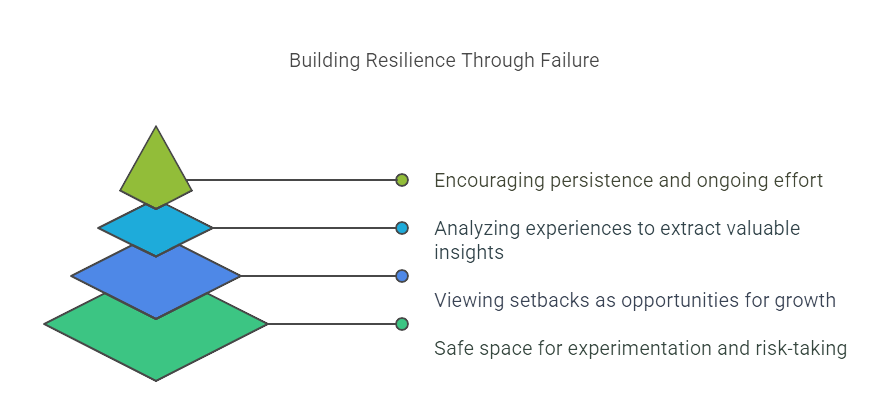
Teach the Power of “Yet”
One of the most powerful words to encourage a growth mindset is “yet.” When a child says, “I can’t do this,” add, “You can’t do it yet!” This simple change in language reinforces the idea that abilities are not fixed but can grow over time with effort and practice. Encouraging children to add “yet” to their vocabulary helps them understand that learning is a process and that their abilities will improve with persistence.

Activities to Promote a Growth Mindset in Kids
There are several fun and engaging activities that can help children develop a growth mindset:
Growth Mindset Games
Games that encourage critical thinking, problem-solving, and collaboration are perfect for teaching a growth mindset. Puzzles, strategy board games, and activities like building with blocks or designing experiments all help children practice persistence and creativity. When they face challenges during these activities, they learn to work through difficulties and celebrate their progress.
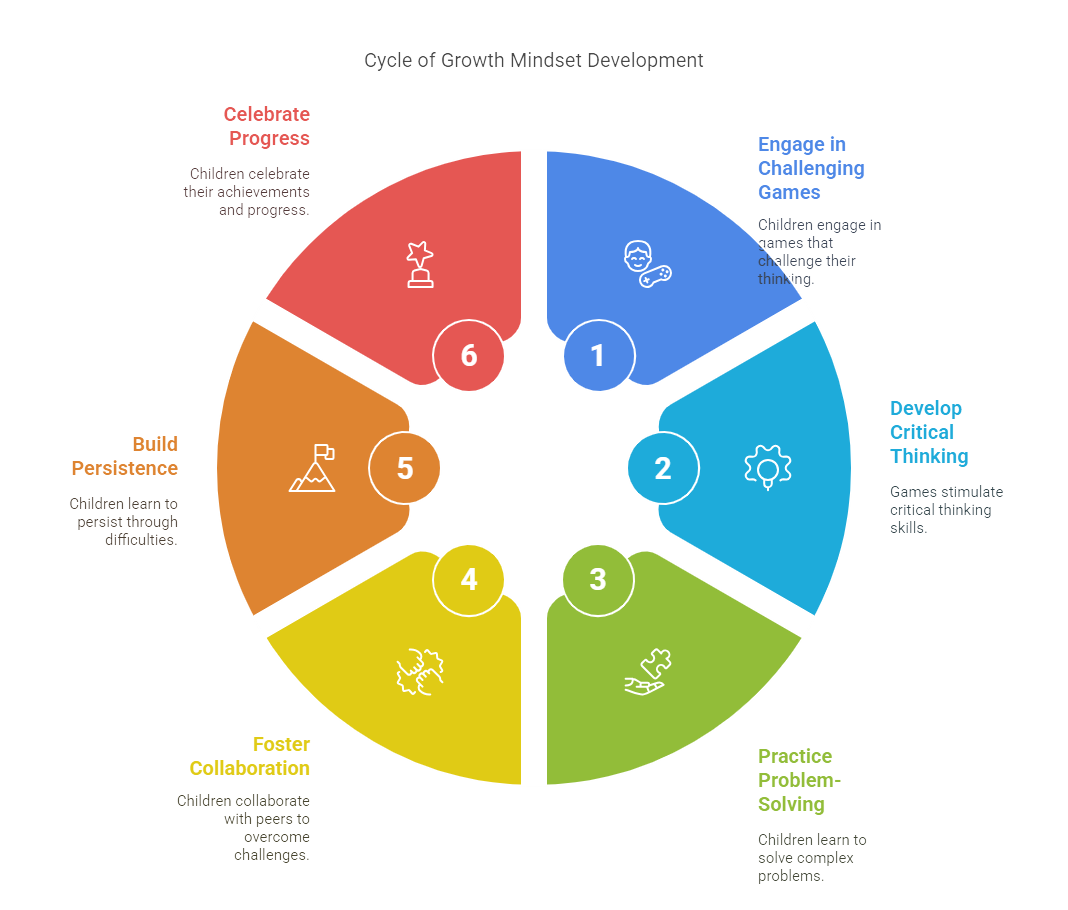
Positive Self-Talk
Encourage children to use positive self-talk when they encounter challenges. Teach them to replace negative thoughts like “I can’t do this” with more empowering statements like “I can get better with practice” or “I’ll figure it out if I keep trying.” This practice helps shift their perspective from self-doubt to self-belief.
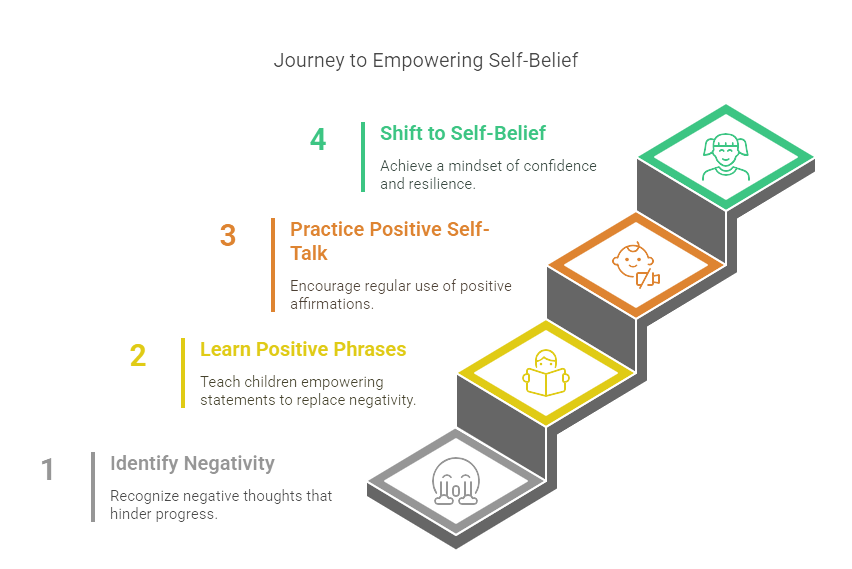
Storytelling and Role Models
Sharing stories of well-known individuals who overcame obstacles—like Thomas Edison, Michael Jordan, or J.K. Rowling—can inspire children to adopt a growth mindset. These role models serve as examples of how perseverance, hard work, and learning from failure can lead to success.
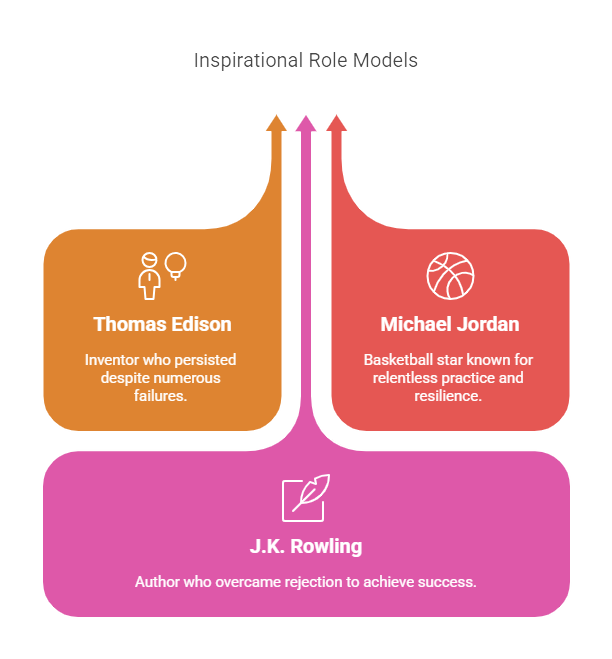
Goal Setting
Help children set specific, achievable goals that focus on effort and progress. For example, rather than setting a goal of getting an A on a test, encourage them to set a goal of studying a certain number of hours each week. Celebrate their efforts toward the goal, regardless of the outcome, and help them reflect on what they learned throughout the process.

Overcoming Challenges in Developing a Growth Mindset
While fostering a growth mindset is valuable, it’s not always easy. Children may struggle with negative self-talk or become discouraged when progress is slow. Here’s how to address some common challenges:
Addressing Negative Self-Talk
When children say things like, “I’m not good at this,” gently redirect their thoughts. Encourage them to see challenges as opportunities to improve. Provide specific examples of when they’ve improved at something through hard work, such as learning to ride a bike or mastering a new skill.

Balancing Effort with Realistic Expectations
It’s essential to remind children that growth takes time. Not every challenge will be easy, and progress may not always be linear. By setting realistic expectations, parents can help children stay motivated without feeling overwhelmed.

Helping Kids Embrace Feedback
Constructive feedback is crucial for growth, but many children struggle with it. Teach them to view feedback as a tool for improvement rather than criticism. Encourage them to ask questions, reflect on the feedback, and use it to enhance their learning process.

Conclusion
A growth mindset is a powerful tool for helping children develop resilience, confidence, and a love of learning. By emphasizing effort over innate ability and encouraging persistence in the face of challenges, parents and educators can set children up for long-term success. Through consistent encouragement, modeling, and activities, children can learn to embrace challenges, view failure as a learning opportunity, and continue to grow throughout their lives. With a growth mindset, anything is possible—yet.

